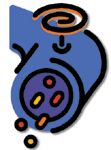New drug delivery good for older drugs
Innovative delivery of drugs that are already Food & Drug Administration-approved appears to be the way of the future. And, in many cases, the future is already here. While great strides have been made in the development of new drug entities, an often easier way for companies to maintain market share and compete with generics is to utilize newer delivery techniques with older drugs already proven effective. In many cases, the new developments will offer additional advantages such as ease of administration, fewer side effects, and increased patient compliance. Here are a few examples of products in the pipeline with unique formulations.

Give me some skin
A new way of treating attention-deficit hyperactivity disorder could be close at hand. FDA's Psychopharmacologic Drugs Advisory Committee has recommended approval of Noven Pharmaceuticals' Daytrana (methylphenidate transdermal system) for once-daily treatment in children ages six to 12 years. The advisory committee voted unanimously in favor of the new patch for its efficacy and safety but recommended that the FDA require postmarketing surveillance and/or studies. The group voted against limiting the patch's use to only those patients who could not use an oral formulation of the drug.
Soon to be gellin'
Soon Menopausal women could be "gellin' like a felon" as the popular shoe pad commercial says, but it won't be to aid their sore feet. BioSante Pharmaceuticals has recently submitted a New Drug Application (NDA) to the FDA for Bio-E-Gel, a transdermal estradiol gel for the treatment of moderate-to-severe hot flashes.
Licensed to BioSante by Antares Pharma, the gel utilizes Antares' proprietary advanced transdermal system that allows quick delivery of the hormone across the skin for rapid absorption. In one 12-week phase III trial, 484 symptomatic menopausal women were given one of three doses of the gel to apply to their arm or shoulder. Across all the dosage levels-low, medium, and high-there was a reduction in the number and severity of hot flashes. Depending on the dose, approximately 25%-52% of patients had 100% reduction of hot flashes by the end of the study, according to BioSante.
No significant differences in the safety profile were noted when compared with placebo at any dose, except for predictable estrogen effects such as breast tenderness. The NDA is seeking approval for all three doses. If approved, Bio-E-Gel will join the rest of the estrogen therapy market, currently estimated to total about $1.4 billion in annual sales.
Another gel in phase II for Antares Pharma is Anturol, a transdermal form of oxybutynin for treatment of overactive bladder, a condition that affects about 17 million Americans. Following once-daily application to the abdomen, shoulder, or thigh, the gel was found to be well tolerated with a reduced side-effect profile compared with existing formulations of the drug. The company is expecting phase III trials to commence during the second half of 2006 and will evaluate the effect of the gel on patients with urge and mixed urinary incontinence.
Inspired by inhalers
The approval of Exubera (insulin human [rDNA origin], Pfizer), an inhalable form of insulin, was just the first of what could be many new drugs delivered directly into the lungs. Nektar Therapeutics, the company that developed the inhaler used with Exubera, was recently granted orphan drug status for amphotericin B inhalation powder. The first of its kind, the inhaled powder would be indicated for the prevention of pulmonary fungal infections in patients at risk for aspergillosis due to immunosuppressive therapy.
The company is hoping that the new delivery method will minimize the common dose-limiting toxicities associated with intravenous amphotericin B. Two phase I studies have been conducted to date, and long-term toxicity trials are currently under way.
Challenges for Pharmacies in 2025: What to Expect and How to Prepare
January 8th 2025Pharmacy professionals are used to overcoming obstacles in this competitive, dynamic field. But the coming year will bring challenges affecting patient care, the industry workforce and their business. Pharmacies must be ready to do more than weather the storm; they need deliberate strategy and sophisticated tools to thrive amidst these obstacles. This white paper will discuss the issues and solutions that should be at the top of every pharmacy professional’s mind as they start the new year.